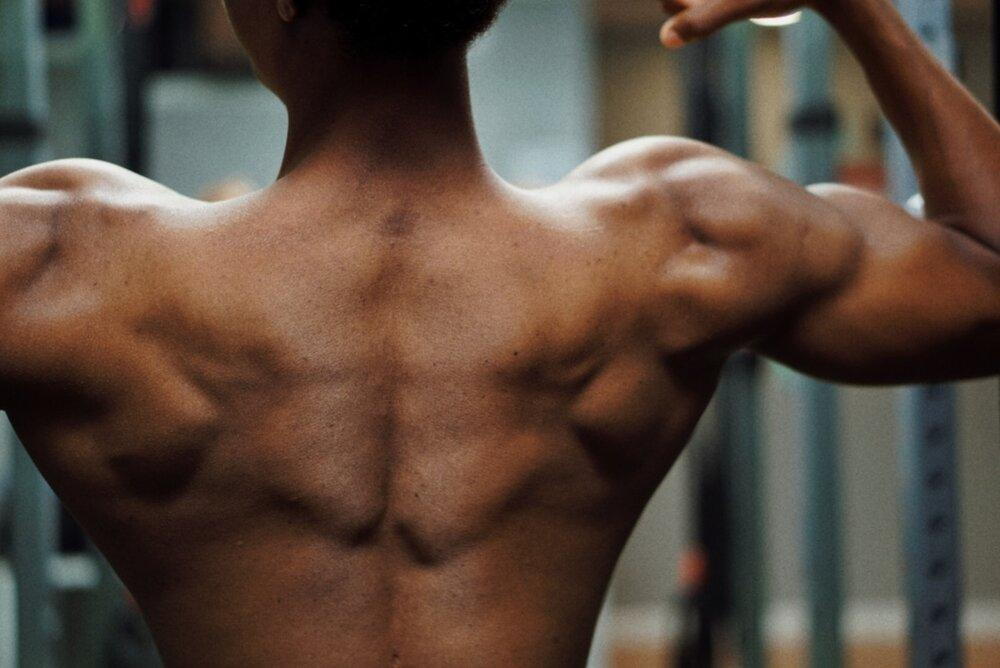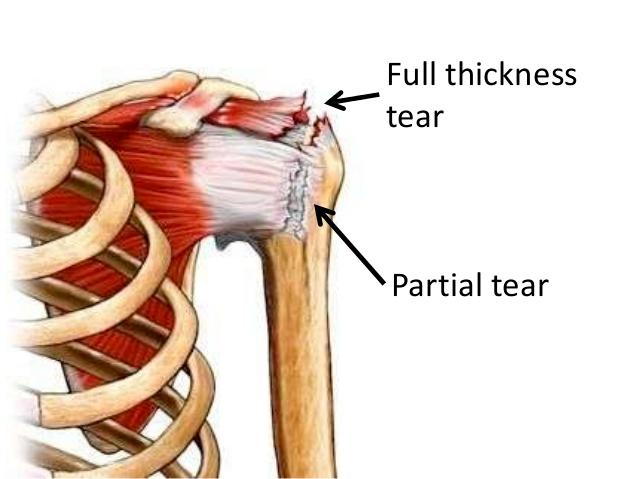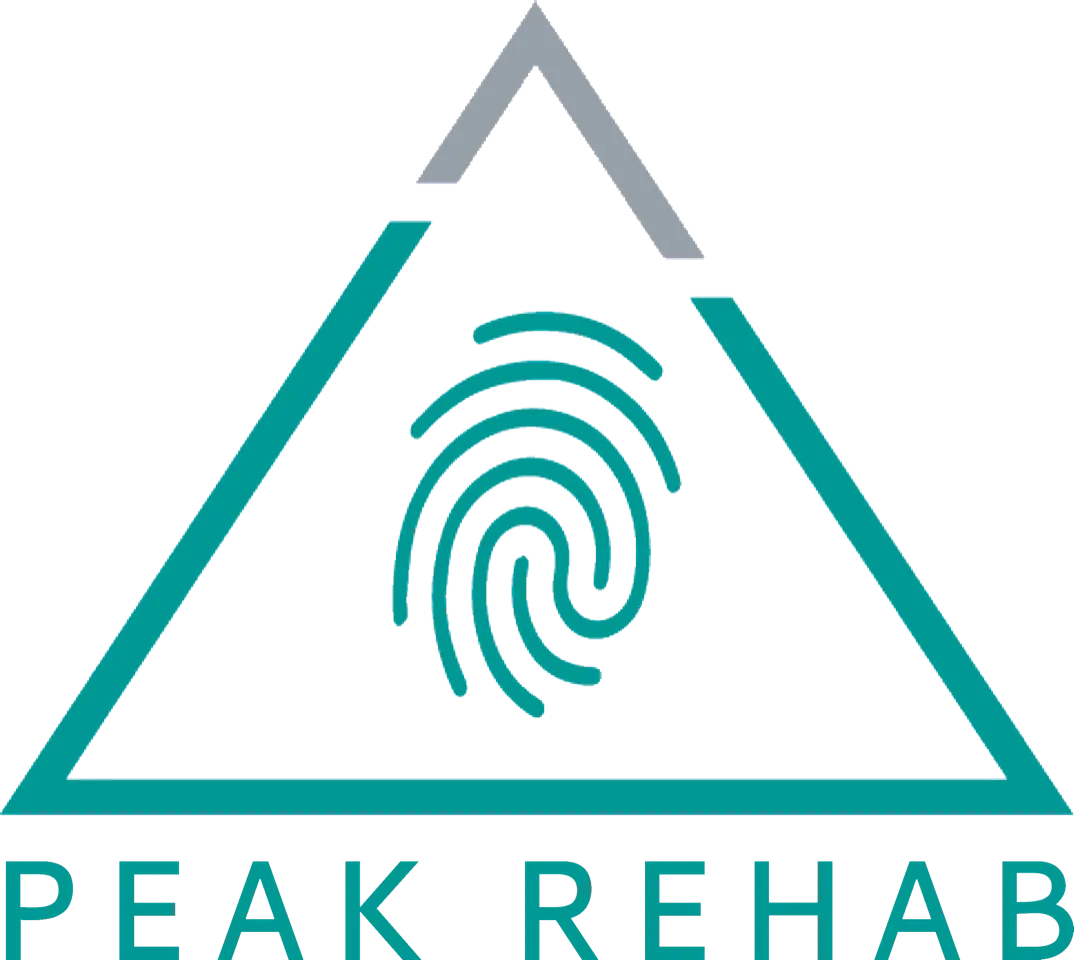What Is a Rotator Cuff Tear?

At the top of our arms where they meet with our shoulders is a group of muscles and tendons known collectively as the rotator cuff. These help to strengthen the joint and give us the power and flexibility that we need. The muscles are prone to tearing, however, in what is known as a torn rotator cuff.
There are two kinds of rotator cuff tears. A partial rotator cuff injury is when the tendon is damaged, but not all the way through. The other is a complete tear. That one that goes all the way through the tendon or pulls the tendon off the bone.

It’s a common injury, especially in sports like baseball or tennis, or in jobs like painting or cleaning windows. It usually happens over time from normal wear and tear, or if you repeat the same arm motion over and over. But it also can happen suddenly if you fall on your arm or lift something heavy.
Rotator Cuff Tear Symptoms
The pain associated with a rotator cuff injury may:
Be described as a dull ache deep in the shoulder
Disturb sleep
Make it difficult to comb your hair or reach behind your back
Be accompanied by arm weakness
Cause trouble raising your arm
pain when you move your arm in certain ways or lie on it
Feel like weakness in your shoulder
Cause difficulty to lift things like you normally do
Make you Hear clicking or popping when you move your arm
See your doctor if you have any of these signs.
Rotator Cuff Tear Causes and Risk Factors
Rotator cuff disease may be the result of either a substantial injury to the shoulder or to progressive degeneration or wear and tear of the tendon tissue. Repetitive overhead activity or heavy lifting over a prolonged period of time may irritate or damage the tendon.
Risk factors
The following factors may increase your risk of having a rotator cuff injury:
Age. As you get older, your risk of a rotator cuff injury increases. Rotator cuff tears are most common in people older than 60.
Family history. There may be a genetic component involved with rotator cuff injuries as they appear to occur more commonly in certain families.
Occupation. Jobs like house painters and construction workers put you at a higher chance of rotator cuff tears.
Lack of blood supply. As you get older, you get less blood to your rotator cuff area, which makes small tears hard to repair, leading to larger tears.
Bone spurs. Bone overgrowth in the shoulder, which happens more often as you get older, can wear away the rotator cuff tissues and cause tears.
Athletics. Baseball, tennis, rowing, and weightlifting are sports that stress your rotator cuff and put you at risk of tears.
Physiotherapy for Rotator cuff injury
If you think you have a tear, see your doctor. They may send you to someone who treats bones, joints, muscles, and tendons, called an orthopedic doctor. They can talk to you about surgical and nonsurgical options, including PT.
Unless the injury is severe, PT is a typical starting point. For many people, physical therapy (PT) is the answer. It may be all you need to treat an injured rotator cuff.
PT is a way to get back strength and movement after an injury. It includes things like exercise, ice, heat, massage, mobilizations and equipment to help return your shoulder back to its normal range of motion.
The goal of physical therapy is to improve the function of the muscles that surround the shoulder. Most people, athletes, and weight-lifters included, only strengthen a few of the large muscles around the shoulder. Physical therapy targets the smaller, but important muscles around the shoulder that are commonly neglected. By strengthening these muscles, therapy can help compensate for damaged tendons and improve the mechanics of the shoulder joint.
Your physical therapist will do an assessment and ask questions related to your injury. They’ll do some tests to learn more about your injury. The therapist will ask you to do certain movements like raise your arm to the front and side, rotate or push against something to see what your limits are.
The therapist will help you:
Get back your range of motion
Learn exercises to strengthen your shoulder muscles
Improve your posture to help reduce pain
Find a way to sleep that doesn’t hurt your shoulder
Learn to carry objects safely
Use ice or heat to ease the pain
Educate you about your condition
Find ways to do things so that they don’t hurt your shoulder
Gradually try to return you to your daily functional activities
As you recover, pay attention to your pain and ask for help if you need it. Maintain your shoulder by regularly doing your exercises which will help heal your injured shoulder and keep it as strong as possible.

At the top of our arms where they meet with our shoulders is a group of muscles and tendons known collectively as the rotator cuff. These help to strengthen the joint and give us the power and flexibility that we need. The muscles are prone to tearing, however, in what is known as a torn rotator cuff.
There are two kinds of rotator cuff tears. A partial rotator cuff injury is when the tendon is damaged, but not all the way through. The other is a complete tear. That one that goes all the way through the tendon or pulls the tendon off the bone.

It’s a common injury, especially in sports like baseball or tennis, or in jobs like painting or cleaning windows. It usually happens over time from normal wear and tear, or if you repeat the same arm motion over and over. But it also can happen suddenly if you fall on your arm or lift something heavy.
Rotator Cuff Tear Symptoms
The pain associated with a rotator cuff injury may:
Be described as a dull ache deep in the shoulder
Disturb sleep
Make it difficult to comb your hair or reach behind your back
Be accompanied by arm weakness
Cause trouble raising your arm
pain when you move your arm in certain ways or lie on it
Feel like weakness in your shoulder
Cause difficulty to lift things like you normally do
Make you Hear clicking or popping when you move your arm
See your doctor if you have any of these signs.
Rotator Cuff Tear Causes and Risk Factors
Rotator cuff disease may be the result of either a substantial injury to the shoulder or to progressive degeneration or wear and tear of the tendon tissue. Repetitive overhead activity or heavy lifting over a prolonged period of time may irritate or damage the tendon.
Risk factors
The following factors may increase your risk of having a rotator cuff injury:
Age. As you get older, your risk of a rotator cuff injury increases. Rotator cuff tears are most common in people older than 60.
Family history. There may be a genetic component involved with rotator cuff injuries as they appear to occur more commonly in certain families.
Occupation. Jobs like house painters and construction workers put you at a higher chance of rotator cuff tears.
Lack of blood supply. As you get older, you get less blood to your rotator cuff area, which makes small tears hard to repair, leading to larger tears.
Bone spurs. Bone overgrowth in the shoulder, which happens more often as you get older, can wear away the rotator cuff tissues and cause tears.
Athletics. Baseball, tennis, rowing, and weightlifting are sports that stress your rotator cuff and put you at risk of tears.
Physiotherapy for Rotator cuff injury
If you think you have a tear, see your doctor. They may send you to someone who treats bones, joints, muscles, and tendons, called an orthopedic doctor. They can talk to you about surgical and nonsurgical options, including PT.
Unless the injury is severe, PT is a typical starting point. For many people, physical therapy (PT) is the answer. It may be all you need to treat an injured rotator cuff.
PT is a way to get back strength and movement after an injury. It includes things like exercise, ice, heat, massage, mobilizations and equipment to help return your shoulder back to its normal range of motion.
The goal of physical therapy is to improve the function of the muscles that surround the shoulder. Most people, athletes, and weight-lifters included, only strengthen a few of the large muscles around the shoulder. Physical therapy targets the smaller, but important muscles around the shoulder that are commonly neglected. By strengthening these muscles, therapy can help compensate for damaged tendons and improve the mechanics of the shoulder joint.
Your physical therapist will do an assessment and ask questions related to your injury. They’ll do some tests to learn more about your injury. The therapist will ask you to do certain movements like raise your arm to the front and side, rotate or push against something to see what your limits are.
The therapist will help you:
Get back your range of motion
Learn exercises to strengthen your shoulder muscles
Improve your posture to help reduce pain
Find a way to sleep that doesn’t hurt your shoulder
Learn to carry objects safely
Use ice or heat to ease the pain
Educate you about your condition
Find ways to do things so that they don’t hurt your shoulder
Gradually try to return you to your daily functional activities
As you recover, pay attention to your pain and ask for help if you need it. Maintain your shoulder by regularly doing your exercises which will help heal your injured shoulder and keep it as strong as possible.
Visit our Office
Peak Rehab
2 Kennedy Rd S Suite #4A
Brampton, ON L6W 3E1, Canada
